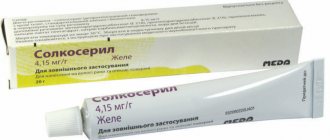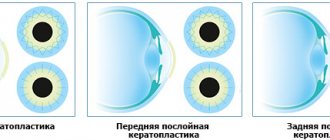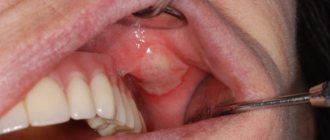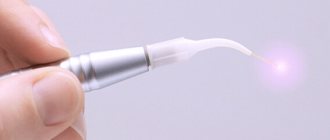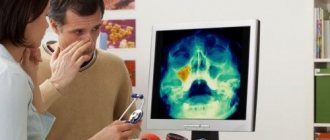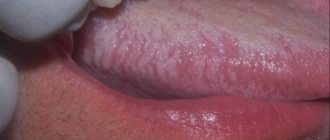Cheek cancer is a malignant neoplasm of the oral cavity.
Examination of patients with symptoms of cheek cancer at the Yusupov Hospital is carried out using modern diagnostic equipment from leading companies in the USA and European countries. Oncologists provide comprehensive treatment for cancer of the buccal mucosa. The medical staff is attentive to all the wishes of the patient. Chefs provide special dietary meals. Professors and doctors of the highest category develop tactics for managing patients with cheek cancer at a meeting of the expert council. Early diagnosis of the disease and multidisciplinary therapy improve the prognosis and five-year survival of patients after treatment.
Causes of cheek cancer
Cancer of the buccal mucosa develops under the influence of the following provoking factors:
- Use of tobacco in any form (cigarettes, cigars, pipes, chewing tobacco);
- Alcohol abuse (the risk of developing cancer increases when the use of alcohol and tobacco is combined);
- Infection with carcinogenic forms of human papillomavirus.
One risk factor is exposure to sunlight. Both family history and genetic predisposition, as well as exposure to mutagenic environmental factors, play a role in the development of cheek cancer. The formation of a malignant tumor occurs in several stages. The most important is the disruption in the functioning of oncogenes and genes that inhibit tumor growth. The development of malignant neoplasms of the cheek is associated with inactivation of the p16 gene, mutations in the p53 gene, and the introduction of the human papillomavirus.
Contour plastic surgery of jowls
Facial reinforcement with Radiesse gel or RegenLAb plasma filler. The drugs are injected deeply into the periosteum area under the cheekbones. Thanks to this technique, the face restores youthful volume, acquires clear, graceful contours and a heart shape.
| Michelle Pfeiffer | Elizabeth Hurley |
In the injection area, gels as a bonus start the process of skin restoration and help to significantly refresh it, eliminate wrinkles and smooth out folds.
Remember! There is no point in injecting gel or lipofilling directly into the lower jaw. This will solve the problem (and only briefly) for those whose sagging is caused by excess skin and is not accompanied by excess fat.
The mechanism of development of cheek cancer
Malignant tumors of the cheek occur against the background of precancerous changes in the epithelial and subepithelial layers (leukoplakia or erythroplakia). The risk of leukoplakia degenerating into invasive cheek cancer is about 4-6%, with erythroplakia it reaches 30%. Subsequently, dysplasia transforms into “cancer in situ”, which penetrates into surrounding tissues and metastasizes to local and regional lymph nodes.
In some patients, even those cells that do not initially raise suspicion of dysplasia upon initial microscopy may gradually become malignant. As the tumor process progresses, distant metastases occur in the bones, lungs, and liver. Buccal cancer can grow through the skin.
Exercises for jowls
If you are not lazy and devote only 15-20 minutes a day to yourself, then gymnastics will return a blooming, fit look to young people. People with pronounced age-related changes, unfortunately, will not be able to remove jowls with exercises, but the complex proposed below will help slow down further sagging of the skin:
- - puff out your cheeks strongly for 30 seconds every day and roll the air in all directions,
- - pursing your lips like a tube, “blow out” an imaginary candle 50–55 times daily,
- - press your index fingers firmly to your cheeks and try to smile, overcoming resistance. This is a great exercise to strengthen your facial muscles!
Symptoms of cheek cancer
Cheek cancer in the initial stages of the tumor process is asymptomatic. Any ulcer that is not prone to rapid healing and any area of hyperkeratosis should be regarded as an early stage of cancer. In the early stages of cheek malignancy, there is little or no pain. As the size of the cancer tumor increases, the following symptoms appear:
- Pain;
- Induration and infiltration of underlying tissues;
- Enlargement of regional lymph nodes, including damage to the lymph nodes of the submandibular triangle, jugular-digastric group and deep cervical lymph nodes.
What does cheek cancer look like? Any non-healing oral mucosal ulcer should be assessed as a potentially malignant tumor and consultation with an oncologist should be sought.
Diseases in which a lump on the gum is accompanied by pain
But the situation is much more complicated when the appearance of periodontal compaction is accompanied by severe pain. In such cases, we are talking about more serious diseases. If a tooth hurts and a lump appears on the gum: what could be the reason?
Periostitis
If periodontitis is not treated on time, the pus, instead of coming out through the fistulous tract, can go into the bone, causing its inflammation - periostitis (popularly known as gumboil). This disease has a more severe course: the temperature rises, swelling of the oral mucosa spreads to the soft tissues of the cheeks and lips, the lymph nodes become inflamed, and the person experiences acute, twitching pain. Such a lump can also form as a result of tooth extraction.
Attention!
Flux is a dangerous purulent disease, which, if delayed, can lead to inflammation of the jaw bone, phlegmon and sepsis. At the first signs characteristic of periostitis, you need to urgently contact a dental clinic!
Periodontitis
Periodontitis is a rapidly developing gum disease that leads to the destruction of the tissues that support the tooth. The reasons are the formation of tartar, lack of vitamins in the food consumed, and improper load on the teeth when chewing. The gums begin to bleed, itching appears, the teeth become loose, and gaps form between them. Then, in advanced cases, periodontal pockets appear between the tooth and the tissue, bad breath due to the release of purulent exudate, the necks of the teeth become exposed, and pain occurs when eating cold, hot, sour and salty foods. Due to the accumulation of pus in the pockets, the gums become covered with light-colored small bumps - a breeding ground for pathogenic bacteria. The appearance of such symptoms is a good reason to urgently contact a dental clinic: delay will lead to tooth loss.
Gingivitis
If bright red bumps appear on the gums, small in diameter, the gums bleed and are slightly hyperemic, we may be talking about hypertrophic gingivitis - the initial form of the inflammatory process of periodontal tissues. The disease occurs due to poor quality oral care and, in the absence of timely treatment, leads to serious complications, including periodontitis.
Important! Any pathology associated with the oral cavity can lead to serious health consequences. You should visit a dentist not only for treatment, but also for disease prevention!
Diagnosis of cheek cancer
If a tumor of the mucous membrane of the cheek is suspected, oncologists at the Yusupov Hospital conduct an examination using a mirror, palpation of the tumor and lymph nodes. If a long-term non-healing ulcer is detected, a biopsy is performed. If a negative result of histological examination of the material obtained during the biopsy is obtained, the suspicion of the malignant nature of the tumor remains, the biopsy is performed again.
Oncologists clarify the stage of the tumor process, assess the extent of spread of the malignant tumor from the buccal mucosa to adjacent tissues, and find out whether there are metastases to regional lymph nodes and distant organs. If the presence of metastases is suspected, computer and magnetic resonance imaging, ultrasound, and scintigraphy are used. Distant metastases are found in 20% of patients at the time of diagnosis.
Computed tomography and magnetic resonance imaging make it possible to assess the condition of the deeper anatomical structures of the oropharynx and surrounding tissues. If there is a suspicion of metastases to the lymph nodes or tumor infiltration of the floor of the mouth, a cytological examination of the aspirate obtained under ultrasound guidance is performed. To exclude distant metastases, a chest x-ray in two projections and an ultrasound examination of the abdominal organs are done.
Considering that the prognosis for cheek cancer is serious, a tomography of the neck, chest and upper abdominal cavity is performed. Using bone scintigraphy, I exclude bone metastases. Positron emission tomography allows one to identify the source of metastases in cases of undetected primary tumors.
Is it possible to fight jowls using conservative methods?
Unfortunately, all home methods are preventative. Removing jowls without surgery is only possible if they have just begun to appear and have not yet gained a foothold in their occupied “positions.”
You can start eliminating jowls with lifting masks.
One of the most effective modeling masks is a tar mask: finely grate 1/8 of a piece of tar soap and beat into foam, adding a little sour cream. Apply the resulting mixture to the chin, neck and décolleté. Let it dry and reapply the mask until completely dry. Then rinse with warm water and lubricate the skin with cream. This mask has a strong lifting effect and will significantly tighten slightly sagging skin in just a month.
You can use ready-made pharmaceutical masks. Look for marine plankton, kelp, brown algae, lecithin, panthenol, and allantoin in their composition.
You can also do a facial massage yourself: twist a small terry towel into a rope, soak it in a saline solution and pat your lower jaw and neck on all sides for 15 minutes. After the procedure, lubricate the skin with cream.
Treatment for cheek cancer
Malignant tumors are successfully cured using radical radiation therapy while preserving the function of the oral cavity. Radiologists implant radiation sources because it is possible to irradiate a small volume of tissue at a high dose. Radioactive isotopes of cesium, gold, radium, iridium, tantalum, which have the same efficiency, are used as sources.
For small tumors, the size of which does not exceed 1 cm, they are limited to implantation of a radiation source, without resorting to additional external influence. In cases of slightly larger tumors that are not suitable in size for implantation, external irradiation is used along with source implantation.
Traditionally, large cheek tumors are treated with external beam radiation. Recently, oncologists have been using a combination of radiation and chemotherapy. Mobile lymph nodes are radically excised. During prophylactic removal of lymph nodes without signs of damage, in a significant number of cases, foci of micrometastasis are found in them. For this reason, radiologists prefer to perform prophylactic irradiation of the neck in patients without evidence of lymph node involvement by the external beam, sometimes in combination with surgical treatment.
After surgery for cheek cancer, a cosmetic defect is formed. The results of surgical intervention are improved using the technique of microvascular free skin grafting. If a patient develops dry mouth after radiation therapy, he is prescribed oral pilocarpine. The drug increases salivation, which is usually accompanied by minor side effects - sweating and increased urination. For primary or secondary treatment of tumors of the buccal mucosa, patients are prescribed chemotherapy drugs.
Early diagnosis of a cheek tumor allows for effective treatment. If the tumor process is at a late stage, the prognosis worsens. If you experience unpleasant sensations in the oral cavity or identify ulcers of the buccal mucosa, undergo an examination at the clinic by calling the Yusupov Hospital.
Why do jowls appear?
Our face consists of 57 muscles and fat, which is concentrated mainly in the cheek area. This cheek fat, in honor of the French anatomist Marie François Bichat, has its own name - Bichat's fat pads, and reaches a very impressive size.
With age, any person experiences drooping of facial tissues. The lower jaw to the left and right of the chin is devoid of muscle support (this can be easily seen in the figure), and nothing prevents sagging in this area.
As a result, characteristic sagging is formed along the jawline - “bulldog cheeks”, which make the facial contour wavy.
In thin people, shaving is usually due to excess skin and only skin. In all other cases, sagging is enhanced by subcutaneous fat or descending lumps of Bisha
It is believed that Bisha's structures contribute not only to the “blurring” of the contour of the lower jaw, but also cause nasolabial folds and form sufas on the face.
Most often, sagging skin in the lower jaw area is the visible result of a number of invisible changes that have occurred to our face over the years:
- Low collagen and elastin content. Collagen inside our skin is like the reinforcing mesh in buildings made of monolithic concrete. Only with age does the old collagen “break down”, and the new one is not synthesized actively enough. This causes the skin to lose support and elasticity.
- Weakening of the facial muscles, which cannot hold the skin and subcutaneous fat high in the same place. Thus, as a result of weakening of the cervical platysma muscle, a “goiter” and a double chin are formed in the neck area. The same mechanism underlies sagging cheeks.
- Due to a lack of certain elements and hormonal changes, the bones become thinner and the face becomes flattened. Cheekbones lose their “sculpted” volume. Deprived of this important support, all facial structures, like on a sled, literally “slide” down.
- An age-related decrease in the amount of melanin pigment in the skin makes it vulnerable to sunlight and accelerates aging.
A face with jowls is not just a problem of age. There are other reasons too. Individual facial characteristics, stress, constant exposure to wind and cold, smoking, alcohol, coffee, poor nutrition, certain medications, endocrine diseases, rapid weight loss, a poorly developed chin and even the force of gravity all contribute.
The risk of developing early jowls is especially high in heavy individuals with a large amount of cheek fat. These are overweight people and those who, at normal weight, inherited chubby cheeks.
The same factors apply to men. But due to gender characteristics, they have less facial fat. Their skin is not subject to hormonal fluctuations during pregnancy and menopause; it remains dense for a long time. Therefore, men's jowls appear 10-15 years later.
Expert comment:
“The appearance of jowls in youth is usually a consequence of being overweight. In all other cases, this is an obvious sign of age.
. But if jowls appear after 40 years, there is no need to urgently remember the forgotten cosmetologist.
Don't get me wrong, you definitely need to continue to take care of yourself. But creams, face masks, peelings and mesotherapy do not work on jowls. And do not rush (no matter what they tell you) to invest money in fillers and 3D mesothreads - they do not work against sagging of the lower jaw, and you will simply waste your money.
To get rid of jowls on your face after 40, you need to work with the causes, not the consequences.
.»
Andrey Iskornev, plastic surgeon.
The mechanism for the formation of jowls on the face is the drooping of intrabuccal fat.
It turns out that jowls “after 40” can be avoided
Hollywood beauty standards have long been shaping the fashion on faces and in everyday life: beautiful, high cheekbones and the effect of sunken cheeks even after 50.
The procedure for removing Bisha's lumps performed at a young age is a reliable prevention of the formation of jowls after forty. By the way, it is used not only to get rid of excess cheek fat.
This technique has a dazzling bonus for correcting the shape of the face: you can noticeably highlight the cheekbones and create the effect of sunken cheeks a la Angelina Jolie, lighten the lower part of the face, visually making it narrower and more prominent.
During the procedure, Bisha's fatty lumps are not completely removed. This approach allows you to get “thoroughbred” and young, blooming cheekbones, avoiding the effect of a haggard face.
Photos "before" and "after"
SMAS face lift. Surgeon - Andrey Iskornev.
SMAS face and neck lift. Surgeon: Iskornev A.A.
SMAS face and neck lift. Photos before and 7 days after without photo retouching. Surgeon: Iskornev Andrey.
Isolated lift of the lower third of the face and neck. Tightening of jowls and folds of sorrow in the corners of the lips. Surgeon: Vasiliev Maxim.
In the absence of significant excess skin, a comparable effect can be achieved with a thread lift of the face and neck. The best result is obtained by placing 4 threads: 2 on each side of the face.
SMAS mid-face lift, endoscopic forehead lift, deep Hollywood platysmaplasty, CO2 fractional skin resurfacing, lip contouring. “Before” and 10 days “after”. Surgeon: Iskornev Andrey.
Implant installation
Due to its anatomical features, a small chin itself is often the cause of the formation of jowls at a young age. Sagging skin is effectively corrected by chin augmentation.
Photos “before” the operation and on the 5th day “after”.
Removal of Bisha's lumps, chin endoprosthetics with a Porex implant (USA), laser liposuction of the chin, thread lifting of the lower third of the face. Surgeon - Iskornev A.A.
